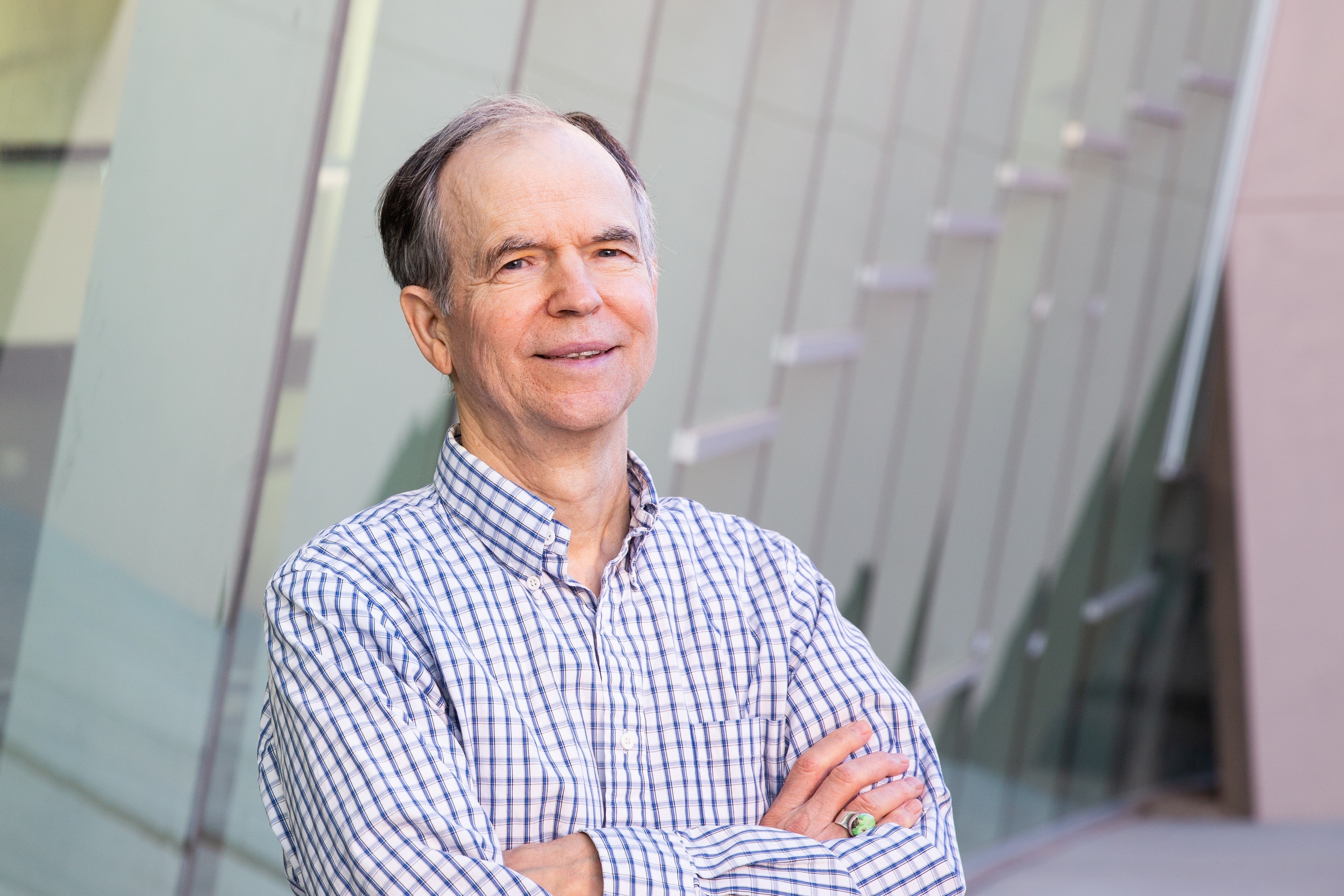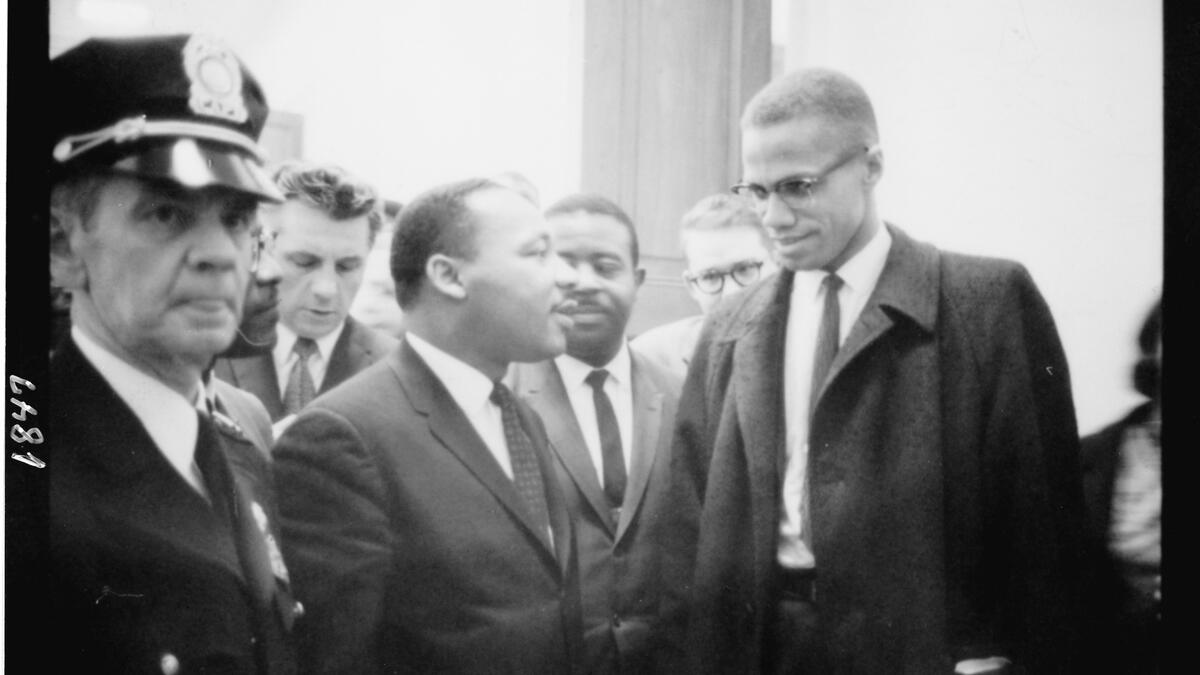Who wrote Malcolm X’s autobiography? The obvious answer is Malcolm X.
But, according to Keith Miller, it’s not that simple.
Miller, a professor in the Department of English and an affiliate of the Center for the Study of Religion and Conflict at Arizona State University, was recently awarded highly sought-after fellowships from the National Humanities Center to complete a book that traces this authorship mystery. This project has been part of Miller’s research agenda in some form or another for most of his career.
He is piecing together the various contributions of Malcolm X, his collaborator Alex Haley, and two sets of editors at two different publishing houses — all of whom were involved in crafting the book. During his research leave, he’ll build on what he’s already gleaned over decades of sifting through archives, interviewing sources, and reading, reading, reading.
Miller’s past books have analyzed the language used by another venerated civil rights leader. “Martin Luther King's Biblical Epic: His Great, Final Speech" was published in 2013, and "Voice of Deliverance: The Language of Martin Luther King Jr. and Its Sources” in 1992. His other research spans studies of writing and rhetoric, mainly focusing on African American and civil rights history.
The strength of Miller’s past work and his proposed research trajectory earned him both the John Hope Franklin Fellowship and the William C. and Ida Friday Fellowship at the humanities center, where he will be in residence at Durham, North Carolina, from September 2020 until May 2021.
Miller recently spoke about his fellowship, his work and research plans with ASU Now.
Answers have been edited for clarity and length.
Question: Congratulations on receiving the National Humanities Center Fellowship. Tell us a little bit about the work that got you to this place. What does this mean for you as an academic?

Professor Keith Miller. Photo by Deanna Dent/ASU Now
Answer: When I was a child, my parents took me to an international church convention in Dallas, where I heard Martin Luther King Jr. deliver a speech. While researching my dissertation in 1983, I interviewed Martin Luther King’s father. I also interviewed Benjamin Mays, an extremely important mentor to King who, during the 1940s traveled to India to talk in person with Gandhi about introducing Gandhian nonviolence into the African American struggle. He also delivered the eulogy at King’s graveside. In 1986, I published my first essay about King’s rhetoric.
I rarely applied for fellowships simply because I graduated from what some might consider “no-name universities” and I thought applying would be a waste of time. But my ASU colleagues Joni Adamson, Mark Cruse and Hilde Hoogenboom — each of whom had previously received a fellowship at the National Humanities Center — kept urging me to apply, so I finally did. Like anyone else, I appreciate the fellowship as a form of affirmation for my career. But I have far to go, still. In addition to my current project, I have at least three books in my head that I haven’t started writing yet.
Q: How would you describe the project you are working on for your fellowship? What do you hope the takeaways will be once it is complete?
A: The fellowship will allow me to finish a project I have been working on for 10 years, a book tentatively titled “Who Wrote ‘The Autobiography of Malcolm X’?” When I taught the book in summer school, my undergraduate students discerned fissures and gaps in the text. The reporter who wrote the introduction calls Malcolm X’s rhetoric “terrifying;” Malcolm X’s collaborator, Alex Haley, contributed an afterword in which he terms his co-author “a demagogue.” I thought that no autobiographer would want an introduction or an afterword to sound that way. I then looked to Malcolm X’s speeches and interviews, some of which contradict “The Autobiography of Malcolm X.” Turning to memoirs and interviews, I discovered that those who knew the black nationalist dispute numerous claims in the book. The biographers do, too. Also, no one seems to agree about the authorship. Even James Baldwin, at that time the best writer in America, seemed uncertain. He wrote about “Alex Haley’s ‘The Autobiography of Malcolm X.’” But, if it was actually an autobiography of Malcolm X, then how could it be Alex Haley’s? So I wondered: Who wrote this book anyway?
I traveled to the Schomburg Center in Harlem, (New York), the premier African American archive. Malcolm X’s widow had stored literally hundreds of pages of his speeches, letters, diaries and radio sermons and allowed no one to see them. Only in 2004 was the Schomburg able to obtain and process these documents, which to this day remain undigitized and unpublished.
Broadcast on 15 African American stations in large cities, Malcolm X’s 80 radio sermons are especially important because, in all likelihood, far more people heard any single radio sermon than ever heard Malcolm X at one time in person. Because these manuscripts were unavailable for so long, every piece of scholarship published on Malcolm X before 2004 was based on a thin and skewed body of evidence. And, apart from one important biography, little scholarship has been published on Malcolm X since 2004. So I think of myself as a detective, trying to piece together what happened by sifting through archived documents at the Schomburg, Columbia University, the Library of Congress and other archives.
This is my career, but also my passion. Publication of Malcolm X’s speeches and interviews has been very haphazard. I don’t want to pontificate about him, black nationalism, pan-Africanism, Islam and so forth. I want to read every document and sift through all the evidence. Don’t tell me that some of it doesn’t count. It all counts: every word he spoke or wrote, inside a mosque and in public, before he went to Mecca and after he went to Mecca. Only a thorough examination can uncover Malcolm X. I picture him in a straitjacket, trying to burst out of the archives.
Q: Before the current health crisis, civil rights were (and continue to be) a recurring hot topic in the news. Is it important to know the history of the movement in order to understand the issues at play today?
A: The popular idea that race disappeared with Obama’s election in 2008 was a total joke. The civil rights movement of the 1960s was the largest mass movement for human rights in American history. Yet widespread misconceptions about it stymie people’s ability to form successful, nonviolent movements that would force governments to actually address the recrudescence of white supremacy, income inequity and the destruction of the climate. If we know how the movement spurred positive change, we would be in a way better position to foster further positive change today. So I try clear up misconceptions.
African American history and culture constantly inspire me. The paradox goes like this: Over weed-choked centuries, African Americans were systematically brutalized by slave owners’ whips, auction blocks, rape, lynching, sharecropping, disfranchisement, segregation and discrimination. Yet, whereas privileged white, modernist writers often claim that life is innately absurd, many African American writers by-and-large offer hope. The hope is real and is sustaining.
Q: Is there an alternative to the “cult of personality” society seems to obsess over today? Does studying the contributions made by one member of a movement contribute to that dysfunction — which plays out alternately as either hero worship or demonization — or is there a way to embrace a more nuanced view of historical people?
A: Throughout my career, I have focused most of my research on Martin Luther King Jr. Yet I dislike the monumentalizing of King. To me, a problem always arises when anyone seeks to understand the dynamics of a mass movement by concentrating on one person. By definition, a mass movement reflects group dynamics. During recent decades, historians have broadened the lens of memory by producing movement studies and biographies of important civil rights leaders — many of whom were women — state by state, and city by city. To study these other leaders is to redefine the movement. Yet the national memory still seems to be shrinking to one person. When President Obama talked about the struggle, he usually spoke about King and usually about “I Have a Dream” and Selma.
Unlike King and Malcolm X, such sterling agitators and theorists as Pauli Murray, Dorothy Height, Mary King and Casey Hayden viewed the campaigns for racial equality and gender equality as completely intertwined. They presaged our current view. Yet we still need to comprehend grassroots protest. The nonviolent movement of the 1960s points to a path forward, beyond our current racial and political miasma. The only question is: Are we smart enough to discern that path and walk it?
Image at top: Martin Luther King and Malcolm X waiting for a press conference in 1964. Photo by Marion S. Trikosko in Library of Congress.
More Law, journalism and politics

Cronkite School launches Women Leaders in Sports Media live-learn program
Women in a new sports media program at Arizona State University got a solid game plan from a sports veteran at an Aug. 20 welcome event.“Be humble, be consistent and be a solver,” Charli Turner…

ASU center to host the Pursuits of Education and Excellence Symposium
The Center for the Study of Race and Democracy (CSRD) at Arizona State University is introducing the Pursuits of Education and Excellence Symposium as part of an ongoing initiative to commemorate the…
ASU journalism students dominate NATAS Student Production Award nominations
Students at Arizona State University’s Walter Cronkite School of Journalism and Mass Communication dominated the nominations field of the prestigious Rocky Mountain Southwest Chapter of the National…
